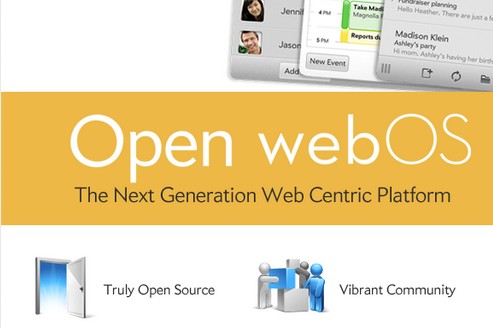Open webOS Profession Edition - commercial version of Open webOS?

When HP decided to promote webOS as an open source operating system, many wondered how the company was going to make money on it? There is no doubt that Hewlett-Packard has something to pay bills, but given the current financial condition, it is unlikely to be inclined to spend money on projects with a small potential profit. Of course, the open source operating system itself cannot attract any cash flow.
Having written off a $ 3.3 billion loss from webOS, HP nonetheless continued to fund webOS, creating a quasi-independent company Gram to promote it. However, it was not clear what Gram was going to make money on. The hint was received after the opening of the source Open webOS 1.0 at the end of last month: in the open webOS there are no cloud services (App Catalog application catalog, data backup service, etc.) present in Palm / HP webOS. As stated in HP, these services will be provided through business agreements with partners and manufacturers. But this is only one part of the solution of the Gram-puzzle.
As it turned out, the “locomotive” of the platform should be the professional version of webOS Professional Edition with a usage model similar to Red Hat. Fedora is a popular open source Linux based operating system that is free for everyone. But as soon as you decide to use it in business processes, you have to subscribe to Red Hat Enterprise Linux for support and additional services. This business model [distributing the base product for free and selling vital services] allowed Red Hat to generate revenues of $ 1.13 billion in 2012.
')
If so, does Open webOS PE also become a source of income for Gram? As the senior WebOS GBU senior vice president Martin Risau wrote in his letter to the staff of the already disbanded webOS GBU unit, “we expect that sometime ODM [original device manufacturers] will pay attention to Open webOS and come to Gram for the professional version”.
Time will tell whether such a strategy will be viable. Although fans continue to actively develop webOS, this does not mean that there is consumer demand for it. Open webOS PE will need to be more than just Open webOS with integrated cloud services. The system should be seriously improved in terms of consumer capabilities. Gram hopes to attract ODM manufacturers along the lines of Google’s Android and, perhaps, Microsoft’s Windows Phone, where serious basic functionality has already been created, and ODM can only customize the OS (at least Android) by user preferences.
Certainly, some time will pass before we see Open webOS PE and products based on it. As Risau wrote: "This is only the first step in a long-term strategy."
Thanks for the info webosNation and Open webOS Forums .
Source: https://habr.com/ru/post/154625/
All Articles